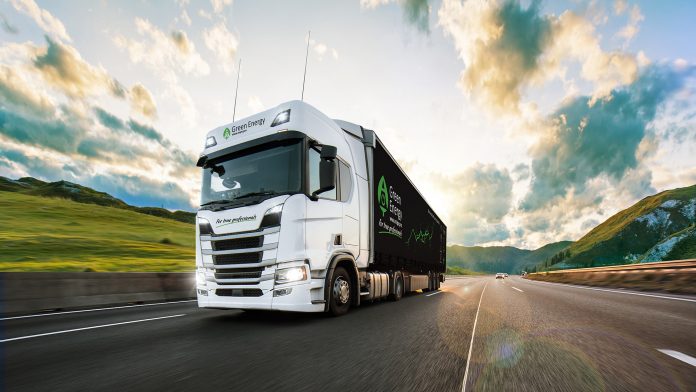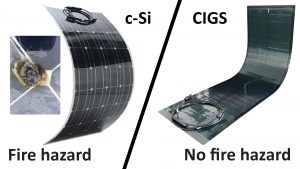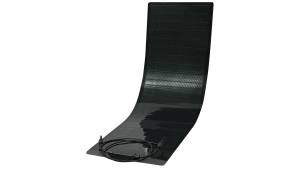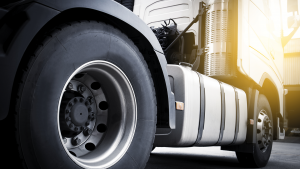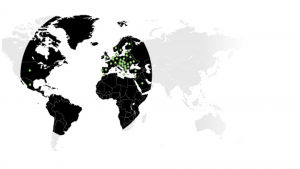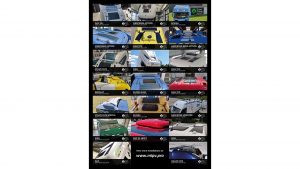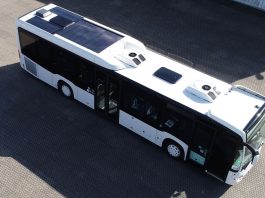Solar cells come with a dark side, but Danish company Green Energy/MIPV.pro makes the sun shine brightly.
With the desire to stop global warming, millions are turning to solar cells as an alternative power solution. In recent years, the transport sector has also opened its eyes to solar cells on vehicles, and with good reason. The savings potential is enormous both from an environmental and financial perspective. However, it is important to choose the right technology.
Low-cost C-Si cells
The market is inundated with questionable products, and the wrong technology misleads many. The well-known crystalline C-Si solar cells are designed exclusively for static use and cannot withstand vibrations. Exposing them to vibrations results in microcracks and hotspots that reduce efficiency and create an imminent fire hazard.
The dark side of solar cells
Besides the fact that vehicles with C-Si solar cells are running fire traps, four out of five C-Si solar cells are manufactured in China – but solar cells come with a dark side. Almost all of China’s solar industry is exposed to forced labour and extensive repression in Xinjia.
Fortunately, there is an alternative that is not only designed specifically for mobile devices but also produced with respect for the planet and the people who live on it. The solution is called CIGS solar cells.
Future solar cells are produced responsibly
Green Energy/MIPV.pro is the world’s largest supplier of Mobile Integrated PhotoVoltaic (MIPV) solutions and offers a wide range of highly efficient CIGS solar solutions across industries, countries, and time zones.
CIGS is a thin-film technology in photovoltaic cells that combines copper, indium, gallium, and selenium (CIGS) to convert sunlight into electricity. CIGS cells are lighter and more flexible than traditional solar cells, making them ideal for vehicles. They are also more efficient than conventional solar cells, with up to 20% efficiency.
The possibilities are many with the CIGS cells, but Green Energy/MIPV.pro have made it their focus to make the heavy vehicles in the transport industry greener.
Green Energy/MIPV.pro CIGS solar cells facts:
- More efficient and safer than Crystalline c-Si solar cells
- Less CO2 emissions
- Reusable materials
- Less wear and tear of the battery and alternator
- Less fuel consumption
- Super thin & flexible
- Plug & play = easy installation
CIGS cells for vehicles
With idling, a considerable amount of money ends up in smoke, noise, and CO2, but installing CIGS cells eliminates idling. The result offers a significant CO2 reduction, enormous fuel savings, extension of the range of electric vehicles, and less wear and tear on both the battery and generator.
A sustainable choice: Environmentally as well as socially
Green Energy/MIPV.pro is driven by one of the world’s biggest challenges – limiting CO2 emissions through non-fossil energy sources – while trying to do the right thing along the way.
We cannot and must not accept the extensive use of forced labour in the solar industry. For the same reason, we have reviewed our supply chain to ensure high standards of sustainability, both environmentally and socially.
Circular production and design principles
From creating the cells, the focus is reducing material consumption and increasing the recycling rate. Raw materials for CIGS cells make up only 3% compared to conventional solar cells. Instead, they use materials that we already have on hand. This includes copper from cable scrap, indium and gallium from TVs and mobile phones, and selenide from refining quartz sand.
The solar wave, one of the great hopes in the race against global warming, must not be at the expense of people. Therefore, the company must carefully consider the choice of solar cells so that it is a wise choice for the company, the employees, the planet, and the people who live on it.
Green Energy/MIPV.pro makes it easy to make the right choice – the ethical choice.
The green calculation
If we install 165 Wp on all long-distance trucks, 220 Wp on all vans and 960 Wp on all European buses, it is equivalent to planting 7,200,000,000 coniferous trees to achieve the exact CO2 reduction.
It is, of course, playing with big numbers. But it illustrates that we are dealing with the low-hanging fruit in the big CO2 account. Here, for a low cost, you can get a powerful tool for a greener transport sector – to benefit the economy and the planet.
Please note, this article will also appear in the fourteenth edition of our quarterly publication.

